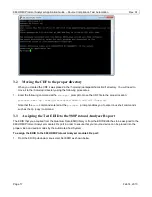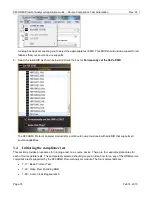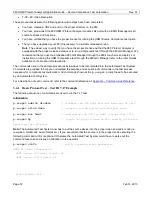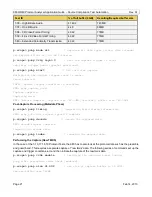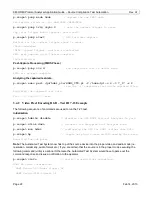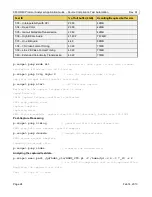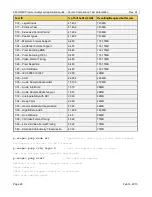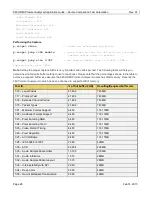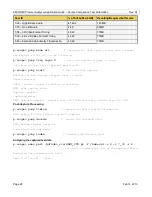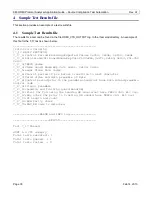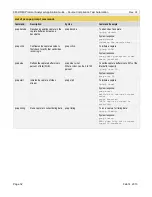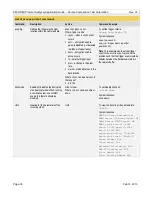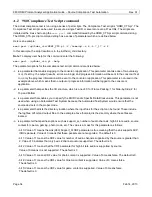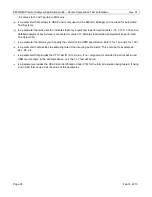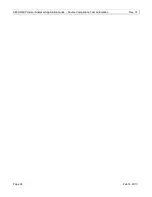
980 HDMI Protocol Analyzer Application Guide
– Source Compliance Test Automation
Rev. A1
Page 25
Feb 14, 2013
3.4.3
Audio Clock Regeneration – Test ID 7-29 Example
The following sequence of commands are used to run the 7-29 test.
Initialization
p-scope> hdmitx disable
// disables the 980 HDMI Protocol Analyzer Tx port.
p-scope> slink down
// disables the Encrypted Link Analyzer mode.
p-scope> mon hdmi
// configuring the 980 for HDMI (rather than DVI).
p-scope> hp
// toggle hot plug to cause an EDID read by the source.
Asserting 1sec HP pulse
Note
: The Automated Test System now has to put the source device into the proper video and audio mode (i.e.
resolution, colorimetry, audio format etc.). If you are certain that the source is in the proper mode executing the
following command (vinfo) is optional. Otherwise the Automated Test System would have to parse out the
command response and issue a notification to the operator.
p-scope> vinfo
// verify incoming video parameters.
HDMI RX Video Information:
HDMI 5V Power Signal: OK
HDMI Source SCDT Signal: OK
.
.
.
Video Format: N/A
Colorimetry : N/A
Extended Colorimetry: N/A
RGB YCC Indicator: N/A
Color Depth: N/A
Pixel Packing Phase: N/A
Performing the Capture
p-scope> clean
// clean out extraneous log files.
p-scope> pcap vchk enable
// check video so that the 980 will not initiate a
capture unless video is present.
p-scope> pcap size 22.654
// set capture buffer size to 22.654% (405MB).
Capture buffer size 405MB
Note
: Setting the proper capture buffer is very important and varies per test. The following table will help you
determine what capture buffer setting to use for each test. Please note that the percentages shown in the table to
achieve a required buffer size assume the 980 Protocol Analyzer module has 2GB memory. Recently the 980
Protocol Analyzer module has been enhanced to support 4GB of memory.
Test ID
% of full buffer (2GB)
Resulting/Required buffer size







